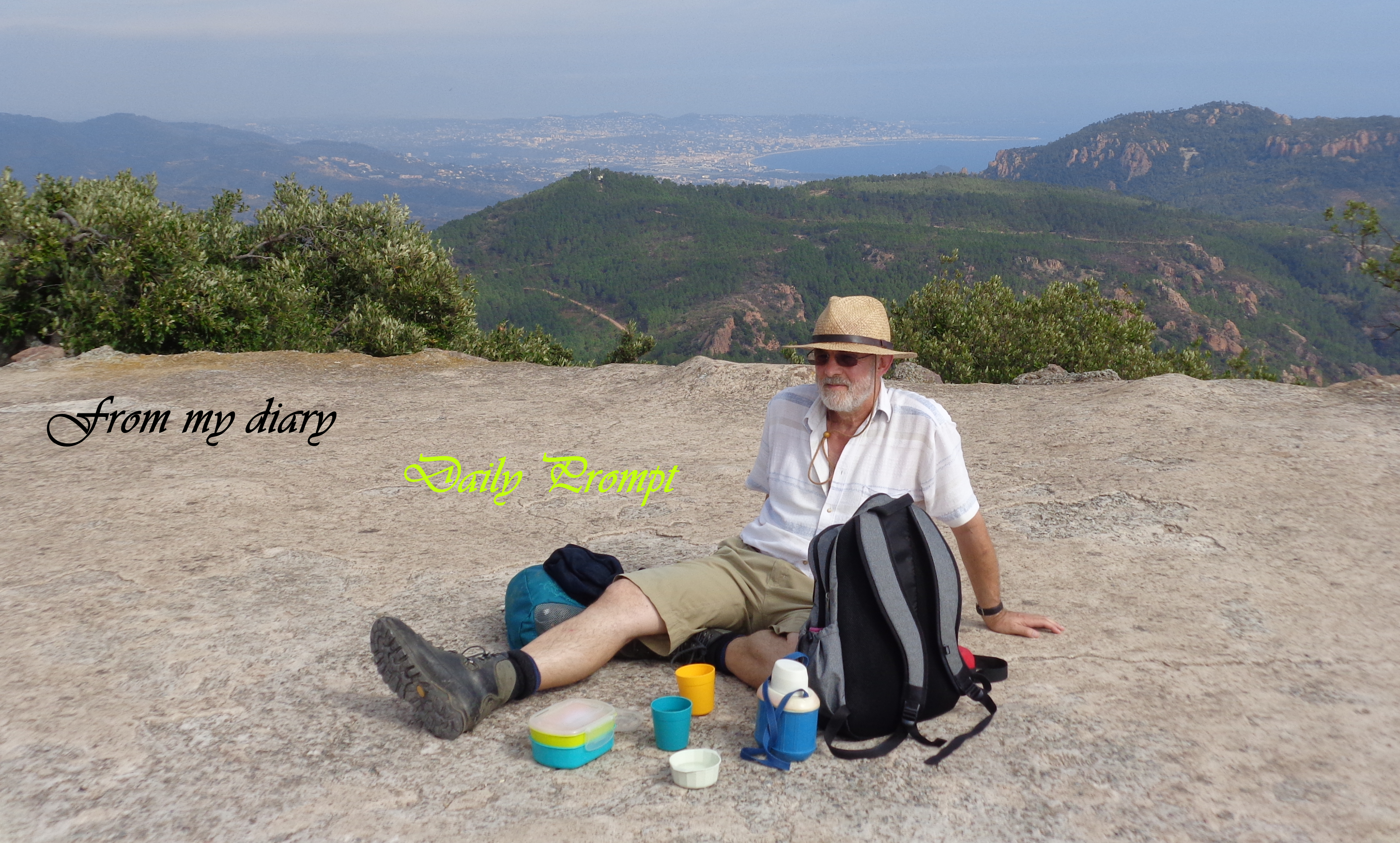 |
|||
|
One swallow may not make a summer but seeing or hearing birds does improve mental wellbeing, researchers have found. The study, led by academics from King’s College London, also found that everyday encounters with birds boosted the mood of people with depression, as well as the wider population. The researchers said the findings suggested that visits to places with a wealth of birdlife, such as parks and canals, could be prescribed by doctors to treat mental health conditions. They added that their findings also highlighted the need to better protect the environment and improve biodiversity in urban, suburban and rural areas in order to preserve bird habitats. |
|||
|
|
Tag Archives: Birds
Bird and birdsong encounters improve mental health, study finds
Filed under Health affairs, Nature, Positive thoughts, Welfare matters
Sunshine for a New Year
Even when so many celebrate the birth of Jesus not on his real date of birth (October 17) but on the birthday of the goddess of light (December 25), at the end of the civic year we, before going into a new year, can bring our thoughts to him and his heavenly Father, the Divine Creator and giver of all good things around us. Let us in these darker days remember and be thankful for the light given to the world.
Milk Eggs and Worry in the New Year by Peter Caligiuri
That is why I say to you, don’t worry about living—wondering what you are going to eat or drink, or what you are going to wear. Surely life is more important than food, and the body more important than the clothes you wear. Look at the birds in the sky. They never sow nor reap nor store away in barns, and yet your Heavenly Father feeds them. Matthew 6:25- 26 Phillips
I must confess that we New Englanders brag a lot about how tough we are when it comes to winter. We laugh uproariously at stories of school districts in the South shutting down because of a couple of inches of snow. But no matter how many New England snowstorms we have lived through, often our conversation at home when it starts falling, begins with the words, “Honey, can…
View original post 820 more words
April 2020
Flowers are still growing,
birds are still singing
but a darkness has come
which will mean the end for some.
In just a short while
the world has lost its smile,
people forced into isolation
with the hope it may save their nation.
Politicians try to offer hope
to those finding it hard to cope,
mankind can be changed for good,
but only if the reality is understood.
 Photo by David Cole on Pexels.com
Photo by David Cole on Pexels.com
Window
We not only have the windows from our living quarters which may become dirty. Also our window on the world may become unclear because of the dust around us.
We should make sure that our window at the world is cleansed and that we can see further than the length of our nose.
Let us all dare to open a clean window to get some fresh air and to hear the birds singing their song, calling for attention and recognizance.
*
To remember
- what is outside the window? = what is there in outside world?
- window screen filters any noise of the living from inside out + outside in=> hear nothing => unanswered screams
- sky = magnificent
Kindness to Animals
 House Finch On Old Rusty Wheel — Image by kenne
House Finch On Old Rusty Wheel — Image by kenne
Kindness to Animals
Little children, never give
Pain to things that feel and live:
Let the gentle robin come
For the crumbs you save at home,—
As his meat you throw along
He’ll repay you with a song;
Never hurt the timid hare
Peeping from her green grass lair,
Let her come and sport and play
On the lawn at close of day;
The little lark goes soaring high.
To the bright windows of the sky,
Singing as if ’twere always spring,
And fluttering on an untired wing,—
Oh! let him sing his happy song,
Nor do these gentle creatures wrong.
— Anonymous
Warm-blooded, feathered vertebrates
BIRDS
Birds are warm-blooded, feathered vertebrates and are oviparous, that is, egg laying. There are some 300 references to birds in the Bible, with about 30 different varieties being specifically named. Reference is made to their flight, often in escaping their enemies (Ps 11:1; Pr 26:2; 27:8; Isa 31:5; Ho 9:11); their roosting in trees (Ps 104:12; Mt 13:32); their nesting (Ps 84:3; Eze 31:6); their uses, particularly young pigeons and turtledoves, in sacrifice (Le 1:14; 14:4-7, 49-53) and as food (Ne 5:18), including their eggs (Isa 10:14; Lu 11:11, 12); and God’s provision and care for them.
26 Observe intently the birds of heaven;+ they do not sow seed or reap or gather into storehouses, yet your heavenly Father feeds them. Are you not worth more than they are? (Matthew 6:26)
29 Two sparrows sell for a coin of small value,* do they not? Yet not one of them will fall to the ground without your Father’s knowledge.+ (Matthew 10:29; compare De 22:6, 7).
Birds were among the earliest living souls on earth, coming into existence on the fifth creative “day” along with the marine creatures.
20 Then God said: “Let the waters swarm with living creatures,* and let flying creatures fly above the earth across the expanse of the heavens.”*+21 And God created the great sea creatures* and all living creatures* that move and swarm in the waters according to their kinds and every winged flying creature according to its kind. And God saw that it was good. 22 With that God blessed them, saying: “Be fruitful and become many and fill the waters of the sea,+ and let the flying creatures become many in the earth.” 23 And there was evening and there was morning, a fifth day. (Genesis 1:20-23)
Of the general terms used in the Bible that apply to birds, the most frequent Hebrew word is ʽohph, basically meaning “flying creature” (Ge 1:20), which may include not only birds but also winged insects. (Compare Le 11:13, 21-23.) The Hebrew tsip·pohr′ also occurs in a large number of texts and is a generic term applying to birds in general. (Ge 7:14) A third Hebrew term, ʽa′yit, is applied solely to the birds of prey.
The following terms are found in the Greek Scriptures: or′ne·on, meaning simply “bird” (Re 18:2); pe·tei·non′ and pte·nos′, both literally meaning “flier.” (Ro 1:23; 1Co 15:39; compare Int.) At Acts 17:18 Athenian philosophers referred to the apostle Paul as a “chatterer.” The Greek word here (sper·mo·lo′gos) was applied to a bird that picks up seeds, while figuratively it was used of a person who picks up scraps by begging or stealing, or, as in the case cited, one who repeats scraps of knowledge, an idle babbler.
A thoughtful study of birds gives convincing proof of the Biblical teaching that they are of divine creation. While birds and reptiles are both oviparous, reptiles are cold-blooded, often sluggish, whereas birds are warm-blooded and among the most active of all earth’s creatures; they also have an unusually rapid heartbeat. The evolutionary view that reptilian scales and front limbs eventually developed into feathered wings is both fanciful and baseless. The fossils of birds called by scientists Archaeopteryx (or, ancient wing) and Archaeornis (or, ancient bird), though showing teeth and a long vertebrated tail, also show that they were completely feathered, had feet equipped for perching, and had fully developed wings. No intermediate specimens, exhibiting scales developing into feathers or front legs into wings, exist to give any semblance of support to the evolution theory. As expressed by the apostle Paul, birds are of a distinct “flesh” from others of earth’s creatures.
39 Not all flesh is the same flesh, but there is one of mankind, there is another flesh of cattle, another flesh of birds, and another of fish. (1Corinthians 15:39).
The psalmist called upon the “winged birds” to praise Jehovah (Ps 148:1, 10), and birds do this by their very structure and their complex design. A single bird may have from 1,000 to over 20,000 feathers. Yet each feather is composed of a shaft from which branch out hundreds of barbs forming an inner web, each barb containing several hundred smaller barbules and each barbule having hundreds of barbicels and hooklets. A single six-inch wing feather of a pigeon is thus estimated to contain some hundreds of thousands of barbules and literally millions of barbicels. The aerodynamic principles built into birds’ wings and body design surpass in complexity and efficiency that of modern-day aircraft. A bird’s hollow bones contribute to its lightness, and thus the skeleton of a frigate bird with a 2-m (7 ft) wingspan may weigh only about 110 g (4 oz). Certain wing bones of large soaring birds even have trusslike supports, like the struts inside airplane wings, within the hollow portions.
At the time of the Flood, Noah introduced into the ark for preservation pairs of birds “according to their kinds.”
7 So Jehovah said: “I am going to wipe men whom I have created off the surface of the ground, man together with domestic animals, creeping animals, and flying creatures of the heavens, for I regret that I have made them.” … 19 And bring into the ark two of every sort of living creature+ in order to preserve them alive with you, a male and a female;+ 20 of the flying creatures according to their kinds, the domestic animals according to their kinds, and all creeping animals of the ground (Genesis 6:7, 19-20)
There is no certain way of knowing how many different “kinds” of birds then existed, some types of birds having become extinct even in recent times. However, it is of interest to note that the listing of birds according to present-day scientific classification presented in The New Encyclopædia Britannica (1985, Vol. 15, pp. 14-106) gives a total of only 221 bird “families,” including some that are now extinct or known only in fossil form. There are, of course, thousands of varieties included within these “families.” {Note}
Following the global Flood, Noah offered up “clean flying creatures” along with animals as a sacrifice. (Ge 8:18-20) Birds were thereafter made allowable by God for inclusion in man’s diet, as long as the blood was not eaten. (Ge 9:1-4; compare Le 7:26; 17:13.) The ‘cleanness’ of certain birds at that time therefore evidently relates to some divine indication of acceptableness for sacrifice; the Biblical record shows that, as regards their being used as food, none of the birds were designated as “unclean” until the introduction of the Mosaic Law. (Le 11:13-19, 46, 47; 20:25; De 14:11-20) The factors determining which birds were designated ceremonially “unclean” are not expressly stated in the Bible. Thus, while most of those so designated were birds of prey or scavengers, not all of them were. This prohibition was lifted following the establishment of the new covenant, as God made evident to Peter by a vision.
9 The next day as they were continuing on their journey and were approaching the city, Peter went up to the housetop about the sixth hour* to pray. 10 But he became very hungry and wanted to eat. While they were preparing the meal, he fell into a trance+11 and saw heaven opened and something* descending like a great linen sheet being let down by its four corners on the earth; 12 and in it were all sorts of four-footed animals and reptiles* of the earth and birds of heaven. 13 Then a voice said to him: “Get up, Peter, slaughter and eat!” 14 But Peter said: “Not at all, Lord, because I have never eaten anything defiled and unclean.”+15 And the voice spoke again to him, the second time: “Stop calling defiled the things God has cleansed.” (Acts of the apostles 10:9-15).
The identification of the birds specifically named in the Bible presents a difficult problem in some cases. Lexicographers generally are guided by the root meaning of the name, since this is usually descriptive, by indications in the context as to the bird’s habits and habitat, and by observation of the birds known to be found in the Bible lands. In many cases the names are believed to be onomatopoeic, that is, imitating the sound produced by the bird.
The diverse topography of Palestine, ranging from cool mountain peaks to deep sweltering valleys and from arid deserts to maritime plains, all together near the SE corner of the Mediterranean Sea, makes it a focal point for a great variety of bird types. Mount Hermon, in the N, is snowcapped for much of the year, while the region about 200 km (125 mi) to the S along the lower Jordan Valley and near the Dead Sea is hot and tropical. Each of these zones contains birds peculiar to its own environment, either alpine or tropical, as do also the temperate zones and the desert regions. (Ps 102:6; 104:16, 17) Additionally, Palestine is on one of the major migrational routes followed annually by birds (storks, turtledoves, quail, swifts, swallows, bulbuls, cuckoos, and others) traveling N from Africa in the spring or S from Europe and Asia in the fall. (Ca 2:11, 12; Jer 8:7) Thus it is estimated that about 470 varieties of birds may be found in Palestine at some time during the course of a year. In view of the deterioration of Palestinian forests and vegetation over the centuries, it is likely that in Biblical times the bird population was even greater.
Particularly notable are the great numbers of birds of prey (Heb., ʽa′yit) found in Palestine, including eagles, hawks, falcons, kites, and vultures. Back in Abraham’s time, birds of prey tried to descend upon Abraham’s sacrifice of certain animals and birds, obliging him to drive them off until the sun began to set. (Ge 15:9-12; compare 2Sa 21:10.) In their search for food these birds rely on their powerful telescopic sight, rather than on their relatively weak sense of smell.
The well-known sight of a cluster of scavenger birds gathered around a carcass often served as the basis for an ominous warning to an enemy (1Sa 17:44, 46), and repeatedly formed part of divinely inspired prophetic warnings to the nation of Israel and its rulers (De 28:26; 1Ki 14:11; 21:24; Jer 7:33; 15:3) as well as to foreign nations. (Isa 18:1, 6; Eze 29:5; 32:4) Thus, the one used by Jehovah to execute judgement was figuratively represented by “a bird of prey.” (Isa 46:11) Desolation of a city or land was depicted by its becoming the habitat of certain birds of solitary nature (Isa 13:19-21; compare Re 18:2) or by the disappearance of all bird life. (Jer 4:25-27; 9:10; 12:4; Ho 4:3; Zep 1:3) The proclamation calling all the birds to gather to feast upon the dead bodies of Gog of Magog and his crowd (Eze 39:1-4, 17-21) is paralleled by that recorded in Revelation in which the bodies of national rulers and their armies become food for “all the birds that fly in midheaven” as a result of the executional work of Christ Jesus as King.
11 I saw heaven opened, and look! a white horse.+ And the one seated on it is called Faithful+ and True,+ and he judges and carries on war in righteousness.+12 His eyes are a fiery flame,+ and on his head are many diadems.* He has a name written that no one knows but he himself, 13 and he is clothed with an outer garment stained* with blood, and he is called by the name The Word+ of God. 14 Also, the armies in heaven were following him on white horses, and they were clothed in white, clean, fine linen. 15 And out of his mouth protrudes a sharp, long sword+ with which to strike the nations, and he will shepherd them with a rod of iron.+ Moreover, he treads the winepress of the fury of the wrath of God the Almighty.+16 On his outer garment, yes, on his thigh, he has a name written, King of kings and Lord of lords.+
17 I saw also an angel standing in the sun, and he cried out with a loud voice and said to all the birds that fly in midheaven:* “Come here, be gathered together to the great evening meal of God,+18 so that you may eat the flesh of kings and the flesh of military commanders and the flesh of strong men+ and the flesh of horses and of those seated on them,+ and the flesh of all, of freemen as well as of slaves and of small ones and great.”
19 And I saw the wild beast and the kings of the earth and their armies gathered together to wage war against the one seated on the horse and against his army.+20 And the wild beast was caught, and along with it the false prophet+ that performed in front of it the signs with which he misled those who received the mark of the wild beast+ and those who worship its image.+ While still alive, they both were hurled into the fiery lake that burns with sulfur.+21 But the rest were killed off with the long sword that proceeded out of the mouth of the one seated on the horse.+ And all the birds were filled with their flesh.+ (Revelation 19:11-21; contrast this with God’s comforting words to his people, at Ho 2:18-20).
18 In that day I will make a covenant for them with the wild animals of the field,+ And with the birds of the heavens and the creeping things of the ground;+ I will rid the land of the bow and the sword and war,+ And I will make them lie down* in security.+19 I will engage myself to you forever; And I will engage myself to you in righteousness and in justice, In loyal love and in mercy.+ 20 I will engage myself to you in faithfulness, And you will certainly know Jehovah.’+ (Hosea 2:18-20)
Worship of birds as representing the true God was prohibited to the nation of Israel (De 4:15-17) but was prominent among the pagan nations, particularly in Egypt. (Ro 1:23) Hundreds of bird mummies have been found in Egyptian tombs, principally of birds such as the falcon, the vulture, and the ibis, all of which were sacred among the Egyptians. Egyptian hieroglyphics contain some 22 different bird signs.
+
{Note}: The “kinds” of animals selected had reference to the clear-cut and unalterable boundaries or limits set by the Creator, within which boundaries creatures are capable of breeding “according to their kinds.” It has been estimated by some that the hundreds of thousands of species of animals today could be reduced to a comparatively few family “kinds”—the horse kind and the cow kind, to mention but two. The breeding boundaries according to “kind” established by Jehovah were not and could not be crossed. With this in mind some investigators have said that, had there been as few as 43 “kinds” of mammals, 74 “kinds” of birds, and 10 “kinds” of reptiles in the ark, they could have produced the variety of species known today. Others have been more liberal in estimating that 72 “kinds” of quadrupeds and less than 200 bird “kinds” were all that were required. That the great variety of animal life known today could have come from inbreeding within so few “kinds” following the Flood is proved by the endless variety of humankind—short, tall, fat, thin, with countless variations in the colour of hair, eyes, and skin—all of whom sprang from the one family of Noah.
+
Additional reading:
- Praise be to God
- Praise the God with His Name
- Praise the most High Jehovah God above all
- Make a joyful noise unto Yahweh, rejoice, and sing praise unto Jehovah
+++
Related articles
- Pterosaurs cast a giant shadow over today’s biggest winged creatures (theguardian.com)
 A man walks under the shadow of a model pterosaur. Photograph: Peter Macdiarmid/Getty
A man walks under the shadow of a model pterosaur. Photograph: Peter Macdiarmid/GettyLook at the birds outside your window: little feathery things that beg for crumbs and make cute chirpy noises. What if they were nine metres across and could fold up their wings and walk on all fours? Not so cute. Long ago, just such hulking creatures ruled the skies.
Pterosaurs were Earth’s first flying vertebrates. Although birds and bats have taken wing in the 66m years since their extinction, we don’t have any flying creatures that approach the size of the biggest pterosaurs. The largest known specimen, Quetzalcoatlus, had a 10-metre wingspan. An immense vertebra recently found in Romania suggests that pterosaurs may have grown even bigger than that. The largest flying animals today, such as the wandering albatross and the Andean condor, average a wingspan of around three metres.
- Birds (milliesmindofmadness.wordpress.com)
Birds are a symbol of freedom and liberty. Then why, I ask, did a bird poo on me yesterday when I was walking my dogs? Why? Could the bird not have the decency to poo somewhere else other than my face. I know that it was multi-tasking but that bird needs to think of others before it let’s loose it’s poo on me. Furthermore, where I was walking was a nice pleasant area so to quote my dad, I got pooed on by a posh bird. - Bird (kyle861.wordpress.com)
Birds (class Aves or clade Avialae) are feathered, winged, bipedal, endothermic (warm-blooded), egg-laying, vertebrate animals. With around 10,000 living species, they are the most specioseclass of tetrapod vertebrates. - Rise of Animals: David Attenborough explores evolution of vertebrates (thisismoney.co.uk)
David Attenborough has visited new paleontological hotspots to fill in evolutionary gaps of how vertebrates came to rule the Earth and how their evolution defines our own human bodies.
In a new two-part documentary, Rise of Animals: Triumph of the vertebrates, the naturalist explores the origins of the backbone by studying a tiny prehistoric animal and a living fossil living in the south of England.Sir David takes a 500-million-year evolutionary journey to study animals including a newly discovered ‘missing link’ from China, a shallow water predator that swam like a fish but took its first steps on land, giant ancient animals and the famous fossil of the feathered dinosaur. - Zoology: Using Animals to Enrich Your World (rebekahloper.wordpress.com)
Animals serve many purposes. They are a vital part of the ecosystem, they offer companionship, and theycan be sources of food.And creating animals can honestly be one of the most fun parts of worldbuilding. But as always, there are things to consider! - A fallen feather (raoulpop.com)
The birds we seldom notice, unless they muck up our freshly washed cars, are able to do something no human being has been able to do so far, without the aid of an engineered mechanism. They’re able to take flight, freely, and soar high above the ground, surveying all they can see, while humans are stuck on the ground. - Doahugou Biota: Study Describes 30 Species from Jurassic of China (sci-news.com)
Over the last two decades, huge numbers of fossils have been collected from the western Liaoning Province and adjacent parts of northeastern China, including exceptionally preserved feathered dinosaurs, early birds, and mammals. Most of these specimens are from the Cretaceous Period, including the famous Jehol Biota.However, in recent years many fossils have emerged from sites that are 30 million years earlier, providing an exceptional window on life during the Jurassic period, about 160 million years ago. - Poachers dump bodies of nine eagles in ditch near Kamloops (calgaryherald.com)
The remains of eight bald eagles and one golden eagle have been found in a ditch near Kamloops, B.C.Officials with the Conservation Officer Service say the carcasseswere discovered last month in the ditch beside a well-used public road.Heads, feet, tail feathers and wings of all nine birds had been removed.
Filed under History, Nature, Religious affairs
A Bird’s-Eye View of Fishing
Problems to solve
Fishers — whether humans or birds — have three fundamental problems to solve:
(1) find fish, (2) approach them, and (3) capture them.
A typical method of early Egyptian fishermen was to use a harpoon to spear fish. These fishermen employed the same basic techniques that some birds of the heron family used long before human competitors appeared on the scene.
The gray heron, a bird common in Egypt’s Nile delta, uses its sharp beak like a lance to spear fish. It can even spear two different fish at the same time, and it may eat over a pound (0.5 kg) of fish a day. The heron might be said to surpass human fishermen in guile.
Generally, herons specialize in stalking and striking their prey. A heron will wade slowly through shallow water or sometimes just stay totally still with its beak at the ready. When a fish comes within striking distance, the heron plunges its head into the water and captures the fish with its beak. Patience is usually the key to the bird’s success.
Fishing
Fishing With Bait
According to the book The Life of Birds, green-backed herons in Japan seem to imitate people who feed bread to fish found in ornamental lakes. Those ingenious birds use pieces of bread to lure fish to within easy reach.
Egrets in the Caribbean also use bread to lure fish. Egrets even catch fish without any bait at all, using their yellow feet. Standing in shallow water on one foot, they wag their other foot in the water to attract the attention of inquisitive fish.
Grab-and-Go Techniques
Birds do their fishing in various ways. Fish eagles, often called osprey, could best be described as grab-and-go fishers. They fly above the water, keeping a lookout for any fish swimming near the surface. Once one is spotted, they fold their wings and dive steeply toward the water, realigning their swoop as necessary before snatching the fish with their talons. This technique requires perfect timing and excellent eyesight.
Sometimes the African fish eagle discovers that the fish it has captured with its talons is too heavy to lift. The fish may weigh up to six pounds (2.7 kg)! What does the eagle do then? Naturalists have observed some solving the problem by paddling to shore using their wings!
Diving for Dinner
Gannets and boobies also dive for fish, but they use a vertical dive. Small flocks fly together searching for shoals of fish that swim near the surface. The silvery bodies of these fish change the color of the sea from dark blue to pale green when viewed from above. This telltale patch of green sets gannets and boobies in motion.
After locating a shoal of fish, gannets plunge like arrows into the water at speeds of up to 60 miles (96.56 km) an hour. The birds create a spectacle one might compare to an Olympic diving competition. Other flocks soon notice the activity and quickly arrive at the spot to share in the feast.

An African Fish Eagle about to catch a fish in Lake Naivasha, Great Rift Valley, Kenya. (Photo credit: Wikipedia)
Unlike herons, boobies and gannets do not spear the fish when their head enters the water. The force of their dive carries the birds to a depth of several feet. Then, as they swim to the surface, they catch the fish and swallow it whole.
Terns are also proficient divers, but they swoop and hover much closer to the water. The Handbook of the Birds of the World explains that rather than dive-bombing as boobies and gannets do, terns depend on “skill, grace and agility in flight.” They will scoop a fish from the surface. Only briefly, on occasion, do they pursue a fish under water.
Team-spirit
Fishing as a Team
Pelicans may look ungainly because of their huge beaks, but they are accomplished fliers and fishermen. Brown pelicans usually dive for their dinner, and they may also snatch fish from local fishermen as they haul in their nets. But pelicans really excel at collective fishing.
By nature, pelicans are gregarious. A remarkable trait is their habit of coordinating fishing efforts. Typically, a flock of a dozen birds alight on the water and form a semicircle. Swimming slowly, they herd a shoal of fish into a convenient shallow area. As they do, they all open their wings and submerge their heads in unison, gulping fish into their beaks.
Of course, like any human fishers, birds often fail in their attempts. But their success rate is generally much higher than that of their human competitors.
+++
Related articles
- Awakenings on the River (playamart.wordpress.com)
The Daily Post tossed out a challenge with four options this week; I selected this one: “Take a draft post that you didn’t published because it didn’t turn out as you expected. Change the story, revise it, and publish.” - Master fisherman heron catches a fish using bread as bait (thisismoney.co.uk)
As most avid fisherman will tell you, you’ve got to use the right bait to attract the big fish.While a seagull might happily feast on a proffered chunk of bread, a green heron knows exactly how to turn that bread into a fish supper.A fascinating video of the heron’s antics shows the bird dropping the bread in the water to lure a fish. - Constant cacophony: Herons return to Devil’s Lake (wiscnews.com)
According to the Wisconsin Department of Natural Resources website, herons are about 4 feet tall, and theycan be identified by their distinctive coloration, which includes blue-grey feathers with a black stripe and plume above their eyes. Their long, yellow beak is perfect for spearing fish.“They’re migrating back now,” Johansen said of the birds, adding that the male herons return first.The females arrive soon after.
“The males will come in, and they’re figuring out their territories, and then they will attract a female to come in and build a nest and start a family together,” Johansen said.
- Loving Who You Are: The Story of the Heron and the Crow (mylovingartproject.com)
The heron knew his time had come. Even the crows knew that the heron was the most patient of all the water birds. He did not mind standing in the water for long periods of time. Today, the heron was firmly planted and balanced on one leg. His piercing eyes were searching. He was ready to harpoon his long and agile beak into the water at the first sign of movement.At that very moment, the last crow circled above the heron and accidentally dropped what was in its beak. The crow’s prized catch fell straight down to the water from high above. It was a thrown out piece of candy wrapped in a shiny red foil. The wrapper sparkled in the sunlight all the way down and hit the water with a small flicker. This caused a faint glimmer of light and immediately caught the attention of the largest fish in the lake. In a flash, the fish swam quickly up to the surface and the heron, who was ready and waiting, made the final move. The heron was a skilled fisher and he did not need to chase the fish. His beak moved swiftly and decisively down into the water and the fish was his at last. - Colonial Waterbird Monitoring (gulfcoastbirdobservatory.wordpress.com)
All these different species nesting in one place is gorgeous, but add to it that all of these birds were parading around in their fantastic breeding plumage and you have yourself a breathtaking view that you never want to leave. Breeding plumage is of course the plumage many birds acquire right before the breeding season to try to attract a mate. Birds dress up to impress each other too! This plumage may include bright colors or unusual feather shapes (such as plumes and streamers).
+
Words could never do these beauties justice. Whether breeding or not these birds are remarkable, but that extra boost of breeding plumage only adds to the wonder of these amazing creatures. It was an amazing experience and if you ever get the chance to see a heron rookery you should definitely go! - Herons and egrets in the UK – your Green shoots photographs (theguardian.com)
Every year grey herons gather in large numbers to breed and raise young, building huge untidy nests out of large twigs, perilously perched high up in clumps of tall trees. London’s Battersea park has a heronry of 30 nests, but from Ulster to Northamptonshire and Devon to Cheshire, now is the best time to see these nests in the wild. Here is a list of best places to see heronries
Little egret (Egretta garzetta) are, as their name suggests, much smaller than the great whites. They are about 60cm tall, with a wingspan of about 90cm. Photograph: Jump for joy2010/Green Shoots/Flickr - Wild Heron at the Oceanside Harbor (bilomathewsblog.wordpress.com)
We like to walk to the beach harbor at Oceanside to watch the activities of people and the pelicans that hang around the fishing boats docked at the harbor. The pelicans will follow the fishing boats that return from the ocean into the harbor knowing that there is possibility of getting fish treats from the boat crew.
Filed under Nature
Spring Time Is Coming

Spring Copse with Rookery Spring Copse has a rookery, lots of nests with birds coming and going. (Photo credit: Wikipedia)
Spring Time Is Coming
Beautiful Spring is coming,
Ah, yes, will soon be here,
For the clear bright sun is shining
All human hearts to cheer.
One the brightest gems of nature
Is the orb that o’er us shines,
And o’er the wide creation,
It’ll shine to the end of time.The birds will soon be singing
On shrub and bough of trees,
Their notes will soon be ringing
Out, forth so merrily.
They love the merry spring time,
Those little birds we love,
They love the pleasant sunshine
That comes down from above.We can hear them sweetly singing
From early morn, till night.
They make music in the woodland
Those little birds; so bright,
We should dearly love them,
Those little harmless things,
And when we hear their music,
We know that it is spring.Ah; it’s pleasant in the springtime,
All nature seems so gay.
Bright flowers in the sunshine,
Sweet fragrance can display.
The hills, and dales, and meadows,
So beautifully covered o’er;
With natures richest verdure,
The green grass, as of yore.The winter will soon be over,
With its cold and chilly winds.
It is sad and dreary ever,
Yet its dying, free from sin.
Now the springtime is coming,
Ah, yes, will soon be here.
We will welcome in its coming
In this glad new year.
– Julia A Moore (1847-1920 / United States)
She inspired Mark Twain to create the character of Emmeline Grangerford in Adventures of Huckleberry Finn. Grangerford’s funereal ode to Stephen Dowling Botts.
+++
Related articles
- For The Love Of Spring, By By Georgina Harrington, 1st Year (paperclipsmagazine.wordpress.com)
I love the three months February, March and April of spring each year
because it is the start of all things new and all things bright and beautiful.
There are new baby animals and birds being born. Flowers, plants and
trees are budding and growing. GMT Summertime is getting closer as it
starts this year on Easter Sunday 31 to the bright mornings and longer evenings.
+
Springtime represents new beginnings in our lives. We are all on a
similar journey but at different stage. Springtime gives us a chance to
rethink what we do for ourselves and our surroundings. - Springtime thoughts (missjayhawk.wordpress.com)
Spring is the time when everything just seems to go right. Hopefully that won’t be true for just me. - Spring Quotables (and a Poem) (writingisfun-damental.com)
secretly adoring shyly
tiny winging darting floating
merry in the blossoming
always joyful selves are singing - April’s Springtime = Joy!!!! (redbyrdorchardcider.com)
i wish i could take a sound recording of the orchard this morning and post it here for you, but alas, photos will have to suffice. Birds galore…mocking birds singing through their playlist, woodthrush whistling, redwing blackbirds and robins flying from row to row. It’s a cacophony of the best kind. Ahhhh, Spring! Sunshine warming me through my sweatshirt, trees showing green tips, and luckily no blossoms yet. Quite a change from last year’s spring. - It’s Spring!! (11elevennyc.com)
Come springtime in NY you begin to notice the beauties that have been hidden for months by Winter. Not just because in Winter leaves and flowers don’t exist and trees become things of Tim Burton’s imagination but because it is just too cold to be out long enough to take notice of much of anything beyond the visibility of your own breath. - Springtime! (jogginginthesunshine.wordpress.com)
The dead is brought back to life and everything seems so balanced and good again. I don’t know about anyone else, but once spring comes, I cannot help but be happy and so joyful! The depressing, seemingly endless cold has gone. No more dreariness, no more dullness, no more runny noses and red cheeks, and no more layers of leggings underneath pants and multiple socks inside boots. Spring brings a new beginning, new opportunities, and new experiences.
+
Don’t we all wish we could have this renewal year-round!? Good news. We can. God provides for us this renewal anytime we want, we just have to ask for it. Everyone goes through plateaus or valleys in their spiritual life. In those times, we need some renewal, some new life, a little pep in our step. God has already brought our dead selves to life, just as the spring does for all the flowers, but now we have to continuously grow, bloom, and bear fruit. This is no easy job. There are days with no sunshine. There are days with too much sunshine, and not enough rain. We get stuck, dull, and weary, without bloom. We feel defeated and need something, anything. - Springtime in Vancouver (emigratebc.wordpress.com)
I stare at the new Community Garden which has sprung up on an abandoned parking lot near Science World – raised beds which a month ago were barely filled with soil, now a patchwork of shades of green . The grass and wildflower roof of the Convention Centre is dazzling and busy with the bees from the Centre’s own hives. The snow on the mountains, which look so close on a clear day, is almost too bright to look at.I find myself running late for meetings as I am distracted by all the new cleanness around me. Buildings and signs and people I have ignored over the winter are suddenly too bright and interesting not to stop and watch. This is a city where people take cherry blossom very seriously; so seriously that it is a weekend and evening pastime to go for a Japanese-style Cherry Blossom walk. - Spring is here! (mondaywritingclub.wordpress.com)
April showers bring May flowers!! / Spring is here and we know it! - The Voice of Coming Spring (joeyphoenix.com)
The winter is often a cruel mistress. She’ll tease you with sunshine then gift you with gale force winds. You’ll see a bright warm day, followed by a snowstorm. You’ll fight the urge to sink further and further into yourself, because you’re cold and exhausted and tired of traipsing through the ice. - Spring Sunshine (myfanwyfox.wordpress.com)
I’ll welcome you,
fling open doors,
shuck off vesty layers, - Its Springtime in the Midwest (vote29.com)
The Rock River iced over this Winter. The other day the ice started to break up and the river sent sheets of ice down stream toward the Mississippi. - springtime 1 (honoredabove.wordpress.com)
This is the time of dancing. I redeem all things. As I orchestrate the cosmos, so I am involved in your life. My pleasure is to see you live: life, and life abundant. You are not here to suffer without hope, but to overcome. Victory is Mine, and I give it to you. Victory is yours! - 8 Reasons We’re Looking Forward to Springtime Photography (sarasotatim.wordpress.com)
For us photographers, most seasonal changes bring about opportunities to take great photos under differing conditions, and usually no change is more dramatic than the transition from winter to spring. The world thaws into a new and color-dripped landscape, ripe for capturing its natural beauty through springtime photography. - Springtime (alicehocker.com)
We should welcome change into our lives, allowing as nature does. Giving ourselves permission to blossom, enjoying life to the fullest. - It’s Springtime again… (staciawrightbreel.wordpress.com)
Some of my closest professional friend/confidants keep telling me I need to start a blog. So… Okay, here I am. It’s Spring. - Find some nice photos on Springtime (hjsphoto.wordpress.com)
After nearly one week of high feverish virus infection I am back, slowly… - Springtime in Bloom (benspark.com)
For me, one of the official start to Spring is when our two backyard trees are in bloom. I took a photo of the flowers blooming on the tree as I walked to the car to go to work tonight. - Walter Russell Mead: Springtime in Kiev, or Just Another Winter Storm? (ivoter.com)
With a revolution on, the chances that events in Ukraine could provoke a dangerous confrontation between Russia and the West may be increasing. Walter Russell Mead writes: For the third time in a generation, there is revolution in Ukraine. For the second time in a decade, Viktor Yanukovych has been overthrown in Kiev. - Spring flowers bring color to Baltimore (darkroom.baltimoresun.com)
Sun photojournalist Karl Merton Ferron was walking with his family one morning in March and noticed hints of color from early spring flowers contrasted against an otherwise brown-and-gray winter.With the anticipation of springtime, he photographed the renewed colors and vibrancy of emerging blossoms. Some may consider a number of the images to be mere weeds, but weeds are only those plants people choose to remove, rather than cultivate. - Springtime walk with the dogs (unniewmartinsen.com)
A few weeks ago, the winter finally released it’s grip of Copenhagen, and things started to look a bit brighter… and warmer. Now almost everything has bloomed, even though the temperature is not what it usually would be.
Filed under Nature, Poetry - Poems


















































































































